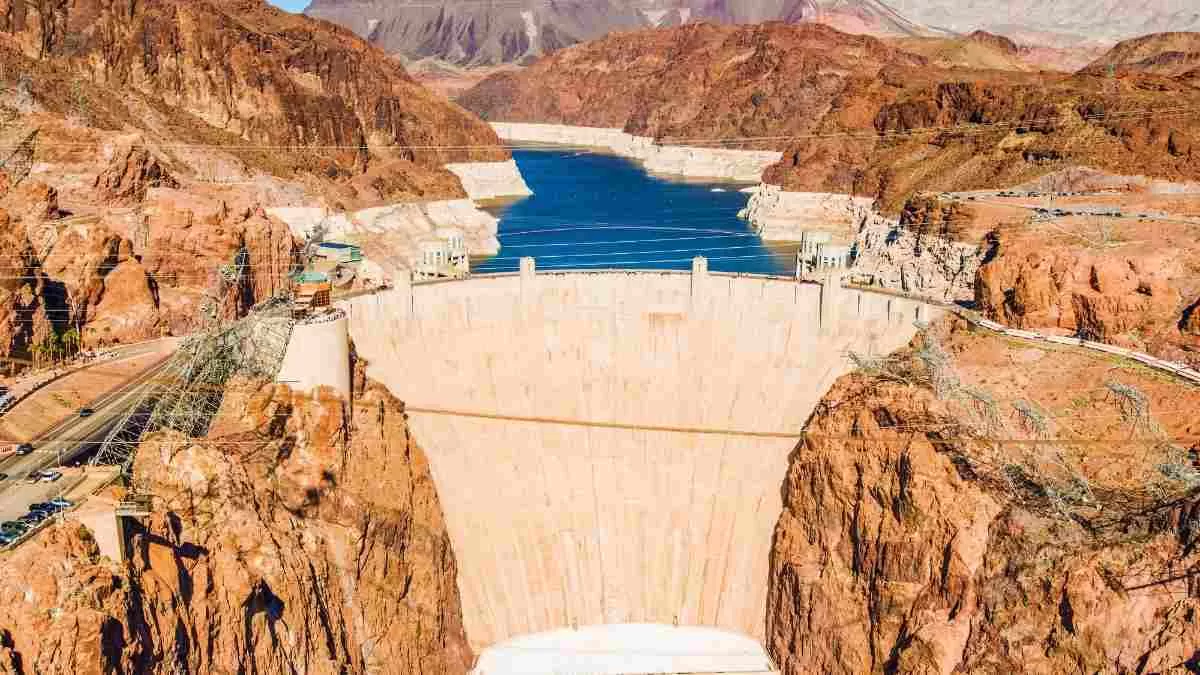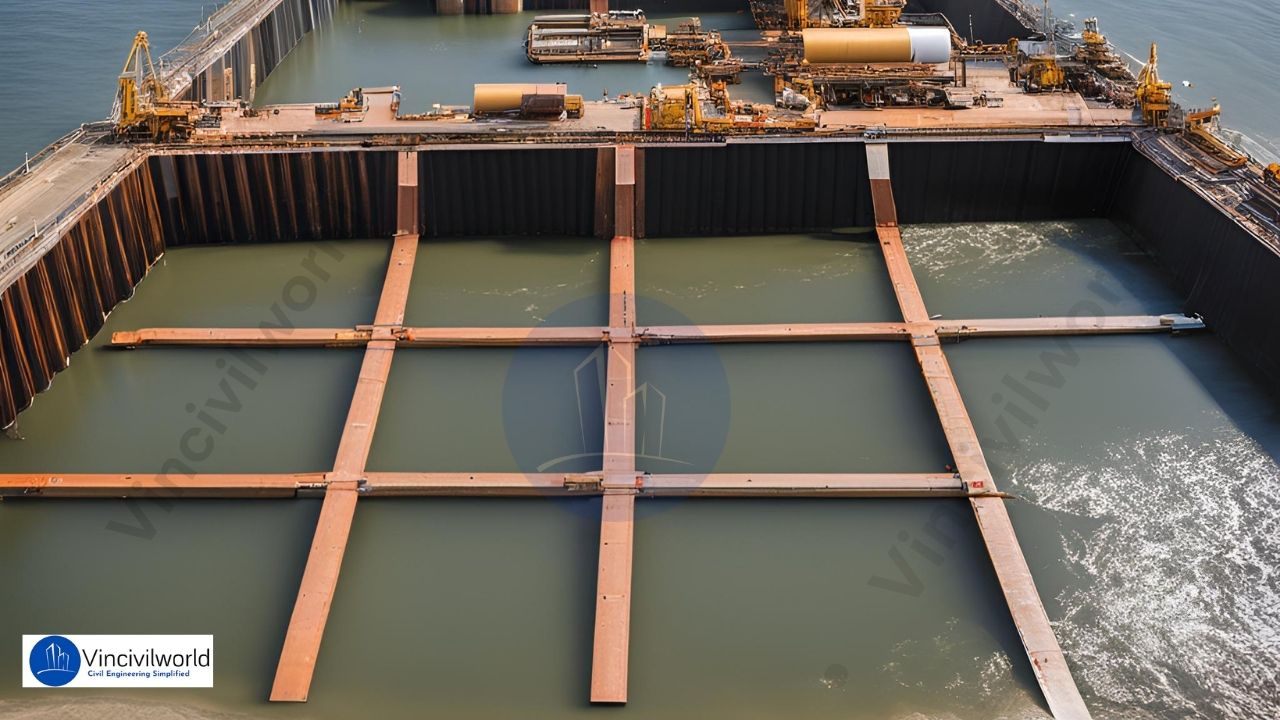Reservoirs are artificial or natural structures used for collecting and storing for further usages. The reservoir is formed by constructing dams across rivers, valleys, and streams. The Reservoir is located on the upstream side of dams and prevents floods by managing the water flow apart from serving as a storage basin.
Also Read : Types of Dams – 3 Classification Criteria Explained.
Also Read : Components of a bridge – Types and Functions Explained
Functions of Reservoirs
Reservoirs are man made lake or a fresh water body that plays an important role a lot of ways as listed below.
- Water supply
- Flood control
- Environmental management
- Hydroelectric power management
- Navigation
- Irrigation
- Development of fish and wildlife
- Soil conservation
Also Read : Components of a dams-12 Dam Components explained.
Types of reservoirs
Reservoirs are broadly classified into three types.
- Valley dammed reservoirs
- Back-side reservoirs
- Service reservoirs
Valley dammed reservoirs
Valley dammed reservoirs are located between mountain valleys where there is an existing water body. A dam is built in the narrowest portion for holding the water.
Bank-side reservoirs
Bank side reservoirs are made by diverting water from rivers and streams to an existing reservoir. These reservoirs can be located in different geographical locations.
Service reservoirs
Service reservoirs are man made reservoirs located above the ground or below the ground. The huge water towers/ water tanks and sumps are service reservoirs.
Reservoir components and terms
There are some specific terms for defining the water level and storage capacity of a reservoir
Pool level
The water level at a particular point of time is called the pool level. No water can be collected above the maximum pool level. No water can be drained below the minimum pool level.
Useful Storage
The volume of water within the normal pool level and minimum pool level is known as useful storage.
Dead storage
The volume of water underneath the minimum pool level is known as dead storage.
Surcharge Storage
The volume of water within the normal pool level and maximum pool level is known as surcharge storage.
Reservoir yield
The volume of water discharged within a certain interval of time is reservoir yield.
Reservoir Planning
Accurate planning is necessary for locating a reservoir. For planning a reservoir the following points are taken into consideration.
Topography
A Broad natural valley opts as the site of a reservoirs. The valley can be U- shaped or V-shaped. For reservoirs sites, flatland and plains are not considered.
Ground water condition
The groundwater investigation is done by analysing the water table level and reservoir level.Hence it is an ideal situation for the reservoirs site if the water table level and the top reservoir level is the same. No loss or gain is ensured.
Permeability
Permeability is a default nature as the rocks are porous. It is considered when the water table is below the reservoirs level. It is a significant characteristic for investigation.
Hydrological Investigation
This involves the study of runoff pattern. Leakage quantity should be minimum. Storage capacity calculation and maximum discharge rate are also estimated.
Difference between dams and reservoirs
| DAMS | RESERVOIR |
| Structural barriers built across,rivers valleys,streams etc for the purpose of storing and managing water flow. | Reservoir is a large water body formed behind the constructed dam structure across a river,stream,etc |
| Dams are reinforced concrete structures or structures made of bricks rubble etc erected across water bodies to control the water flow. | The reservoir is the water that accumulates behind the constructed dam. |
| Create site for hydro electric power generation. This can improve the industrial development and living standards of people living in that region. | Stores water for later usage, water for human consumption and excess water for agricultural and industrial uses. |
| Dams fluctuates oxygen levels and restricts migration of fishes in the river. | Reservoirs leads to the displacement of people. |
| Dams are tourist attraction sites | Helps in water transportation |
Reservoir Sedimentation
Rivers transport sediments. During heavy rainfall, sediments are carried by the water to the reservoir. Silts are accumulated due to soil erosion. These get collected in the dead storage.
Sedimentation depends on Rainfall intensity, Soil nature, Soil type, topography and vegetation. The sediment deposit replaces the water storage. Thus water supply and flood control are affected.
The sediments should be removed eventually. Hydraulic flushing, dredging, Explosive mobilization are methods adopted for sedimentation removal.
Environmental impacts of Reservoirs.
- The construction of the reservoir prompts severe effects on the environment.
- Since the water is stored, the rate of transpiration is high. This changes the moisture concentration.The climate of the surrounding area is affected. It causes natural temperature fluctuation. This causes heavy rainfall and deprives the traditional rainfall patterns.
- Reservoirs disturb the flow and composition of the rivers. The water from the downstream has high energy, it enhances the water flow by eroding the river bed.
- The change in the river composition affects the upstream and downstream habitats. The reservoirs disturb the fish and birds migration.
- Studies show that reservoirs emit greenhouse gases. Anaerobic bacterias are seen in the river bed releases carbon dioxide and methane. This occurs in tropical regions.
- They also cause troubles for people living near the reservoir site. Old and failing dams lead to disasters.
- Reservoir induced seismicity is a phenomenon of provoking earthquake by reservoirs. This happens when water sweeps into the minor cracks under the bed.






5 thoughts on “Reservoir vs Dams || Reservoir- Types and functions”
Comments are closed.